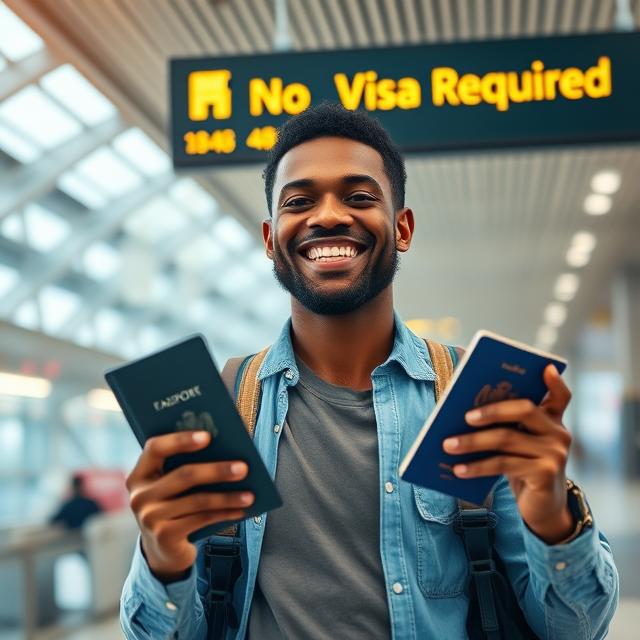How to Create a Winning Statement of Purpose (With Examples) Table of Contents Outline No. Outline Subheadings 1 Introduction What Read more
Top 3 Mistakes Killing Your Visa Approval—Fix Them Fast! Table of Contents Outline No. Outline Subheadings 1 Introduction Why Visa Read more
You Won’t Need a Visa to Travel Here in 2025! Table of Contents Outline No. Outline Subheadings 1 Introduction Why Read more
How to Move Abroad Without Telling Your Boss or Family! Table of Contents Outline No. Outline Subheadings 1 Introduction Why Read more
Table of Contents
ToggleNew Zealand on a Budget: Step-by-Step to Booking Your Flight Right
Introduction – Why New Zealand Should Be Your Next Adventure
When you picture New Zealand, you might see rolling green hills straight out of a fantasy film, snow-capped mountains, turquoise lakes, and windswept coastlines. It’s not just a travel destination—it’s a whole experience that blends adventure, nature, and unique culture. The challenge? Many people believe it’s too expensive to get there, especially if you’re traveling from far-flung places like North America or Europe. But that’s not the full story. With smart planning, you can book your dream trip to New Zealand without draining your bank account.
Travelers are often shocked at how many budget-friendly opportunities exist for visiting New Zealand. It’s true the country has a higher cost of living, but that doesn’t mean flights have to cost you an arm and a leg. Whether you’re a backpacker, a gap-year student, or a traveler trying to stretch vacation days and dollars, the trick lies in understanding the airfare game, timing your booking just right, and knowing where to hunt for the best deals.
And here’s the best part: the journey to New Zealand is part of the adventure. Whether you stop in Asia, Australia, or the Pacific Islands on your way, you can turn what could be just a long-haul slog into a multi-country exploration—often for less than you’d expect. By following a methodical, step-by-step approach, you’ll not only save money on flights but also open up opportunities for richer travel experiences.
Setting Your Travel Goals Before You Book
Booking a cheap flight isn’t just about snagging the lowest ticket price you see—it’s about making sure the flight fits into your bigger travel goals. Before you even open a flight search engine, you need clarity on three things: budget, timing, and travel style.
Defining Your Budget: Start with the total amount you can realistically spend on your trip. Don’t just think about flights—consider accommodation, food, tours, and transportation. Your flight budget should ideally be no more than 30–40% of your total trip cost. If you have $3,000 to spend, aim to spend no more than $1,000–$1,200 on your ticket. This keeps the rest of your trip affordable and enjoyable.
Choosing the Best Time of Year to Travel: New Zealand’s seasons are opposite to the Northern Hemisphere, so summer runs from December to February. While the weather is stunning, it’s also peak tourist season—meaning flights are pricier. Traveling in spring (September–November) or autumn (March–May) can cut your airfare by hundreds of dollars and still offer beautiful weather.
Aligning Travel Dates with Seasonal Deals: Airlines often release sales that match low-demand periods. If you can align your vacation time with these windows, you’ll have a better shot at cheap tickets. Flexibility is key—being willing to shift your departure date by even a few days can make a surprising difference.
Understanding the Airfare Game
Flight prices can feel like a mystery box—you never quite know what you’re going to get. But there’s logic behind the madness, and understanding it can save you money.
How Airline Pricing Works: Airlines use a system called dynamic pricing, which means fares change constantly based on demand, seat availability, and booking trends. Prices often start low when tickets are first released, climb as the plane fills up, and may drop again closer to departure if there are unsold seats.
Common Myths About Cheap Flights: One big myth is that there’s a single “best day” to book flights, like Tuesday at midnight. While there are patterns, prices fluctuate daily, and the “best day” can vary based on destination, airline, and time of year. Another myth is that booking last-minute always means better deals—in reality, last-minute tickets to long-haul destinations like New Zealand are often more expensive.
Peak vs. Off-Peak Seasons in New Zealand: Peak season (December–February) sees the highest flight prices. Shoulder seasons—spring and autumn—are much better for both costs and crowd levels. Winter (June–August) can be a bargain if you’re okay with cooler weather, and it’s perfect if you want to enjoy skiing in Queenstown or Wanaka.
Finding the Right Flight Search Tools
The tools you use to search for flights can make or break your budget.
Comparing Flight Aggregators: Websites like Skyscanner, Google Flights, and Kayak allow you to compare hundreds of airlines at once. Each has different strengths—Google Flights is great for speed and filtering, while Skyscanner is excellent for finding flexible date options.
Using Price Alerts to Your Advantage: Setting up price alerts means you’ll get notified when fares drop. This allows you to monitor trends without obsessively refreshing search pages. Many budget-savvy travelers watch prices for several weeks before buying.
Leveraging Airline Newsletters for Deals: Signing up for newsletters from both major carriers and budget airlines is one of the easiest ways to hear about flash sales and promo codes before the general public. While it may mean extra emails in your inbox, those emails can translate into hundreds of dollars saved.
Step-by-Step to Booking Your Flight to New Zealand
Here’s where it all comes together.
Choosing Your Departure City Wisely: Flying from a major hub like Los Angeles, Vancouver, or London often means cheaper fares compared to smaller airports. Sometimes it’s worth taking a budget domestic flight to a hub before heading overseas.
Flexible Dates = Flexible Prices: If you can, avoid locking yourself into specific dates too early. Instead, check for the cheapest days to fly in your desired month. Even leaving on a Wednesday instead of a Friday can save you significantly.
How to Spot Error Fares and Flash Sales: Error fares happen when airlines accidentally publish tickets at unusually low prices. They’re rare but worth jumping on when you see them—just be ready to book fast, as they don’t last long. Flash sales are planned discounts, often lasting 24–72 hours, and are common before low travel seasons.
Timing Your Purchase for Maximum Savings
Timing is everything when booking a budget-friendly flight to New Zealand. While many travelers jump at the first decent price they see, the truth is that patience—and a little strategy—can pay off big time.
The “Best Day to Book” Debate: You’ve probably heard that booking on a Tuesday is best, but the reality is more nuanced. Studies from airfare analytics companies suggest that prices often dip midweek because airlines release fare sales early in the week, but it’s not a hard rule. What’s more important is tracking fare trends for at least three to four weeks before buying. This gives you a sense of the “normal” price range for your route and helps you spot a genuine deal when it appears.
How Far in Advance to Book for New Zealand: Long-haul flights to New Zealand usually see their best prices around 2–6 months before departure. Booking too early (9–12 months out) might mean paying premium prices before airlines start discounting. Conversely, booking too late—especially during peak season—can result in paying 30–50% more.
Why Last-Minute Isn’t Always Cheaper: While last-minute deals work for some short-haul routes, international flights like those to New Zealand rarely get cheaper close to the departure date. Airlines know last-minute travelers are often flying for urgent reasons, so they’re willing to charge more. Unless you stumble across a last-minute sale, you’re better off booking in advance.
The Art of Stopovers
If you think a long-haul trip has to be one continuous flight, you’re missing a big opportunity for savings—and extra adventure.
Free Stopovers That Save You Money: Some airlines offer free stopovers in their hub cities to encourage tourism. For example, flying to New Zealand with Fiji Airways might allow you a few days in Fiji without an extra fare. This not only breaks up a long flight but also adds another destination to your trip for little to no extra cost.
Multi-City Tickets for Budget Travelers: Instead of booking a round-trip to Auckland, you might fly into Christchurch and depart from Auckland (or vice versa). Multi-city itineraries can sometimes be cheaper than simple returns—plus, you save money on backtracking within New Zealand.
Turning Layovers into Mini Adventures: Even a standard layover can become a bonus trip. If your flight connects in Sydney, Honolulu, or Singapore, consider stretching that layover into a 24–48 hour mini-visit. Many airlines allow you to customize this without a massive fare increase, and it’s a great way to explore more of the world on the same ticket.
Budget Airlines vs. Full-Service Carriers
When you’re trying to save money, the lure of a budget airline’s super-low base fare can be strong—but it’s important to know the trade-offs before committing.
Pros and Cons of Budget Airlines: Budget carriers often win on price, at least at first glance. However, they typically charge for extras like checked bags, seat selection, meals, and even carry-on luggage. If you’re traveling light and can handle a no-frills experience, they can be an excellent option. But for a long-haul flight to New Zealand, the lack of included meals, entertainment, and generous legroom can be a big drawback.
When Paying Extra is Worth It: Sometimes, paying a little more for a full-service airline is the smarter move—especially on a flight that’s 12+ hours long. Included baggage, in-flight meals, better seat comfort, and onboard entertainment can make a huge difference in how you feel upon arrival.
Understanding Hidden Fees: Always read the fine print before booking. A budget airline ticket that looks $200 cheaper might end up costing more than a full-service carrier after adding luggage fees, meal charges, and seat selection costs. Doing the math upfront ensures you’re comparing the true cost, not just the base fare.
Using Points and Miles to Fly for Less
Frequent flyer programs and credit card rewards can be your best friend when trying to get to New Zealand on a budget.
Credit Card Rewards Strategies: If you have a travel rewards credit card, you can accumulate points for everyday purchases and redeem them for flights. Some cards even offer large sign-up bonuses—enough for a one-way ticket—if you meet the spending requirement within the first few months.
Frequent Flyer Programs That Work for New Zealand: Airlines like Air New Zealand, Qantas, and Singapore Airlines are part of major global alliances. Joining these programs (for free) can allow you to earn miles not just for flights, but for hotel stays, rental cars, and even shopping.
Mixing Cash and Miles for Better Value: You don’t always have to pay entirely in points. Many airlines let you pay part of the fare in cash and the rest in miles, which is especially useful if you don’t have enough for a full award ticket. This hybrid approach can bring premium cabins within reach for a fraction of the usual price.
Hacks for Reducing Extra Flight Costs
Even if you’ve scored a cheap base fare, airlines often try to claw back some of your savings through add-ons. Fortunately, you can sidestep many of these.
Avoiding Checked Bag Fees: The simplest way to avoid luggage charges is to travel carry-on only. This requires careful packing, but it’s possible—even for long trips—if you stick to versatile clothing and travel-sized essentials.
Bringing Your Own Food and Water: Airplane meals can be overpriced, especially on budget carriers. Bringing snacks and an empty water bottle (which you can fill after security) not only saves money but ensures you have food you actually like.
Saving on Seat Selection and Other Add-Ons: Many airlines charge for choosing your seat in advance. If you don’t mind where you sit, skipping this fee can save $20–$50. Similarly, declining priority boarding or travel insurance (if you already have coverage) can keep your total ticket cost low.
Safety and Comfort on a Budget Flight
Flying to New Zealand usually means spending over half a day in the air, and while budget travel often involves sacrificing some luxuries, comfort and safety should never be compromised.
Surviving Long-Haul Economy Flights: For a 12+ hour flight, your best defense against discomfort is preparation. Stay hydrated by drinking water regularly, even if it means more bathroom breaks. Stretch your legs every couple of hours to improve circulation and reduce the risk of deep vein thrombosis. Wearing compression socks can make a surprisingly big difference in keeping your legs from feeling heavy and swollen.
Choosing the Right Seat Without Paying Extra: If you want more comfort without paying for premium seats, check in as early as possible—sometimes you can grab exit row or bulkhead seats for free. Use tools like SeatGuru to find the best free seats on your aircraft type. Pro tip: avoid sitting near bathrooms or galleys if you want peace and quiet.
Packing Essentials for Comfort: Small items can greatly improve your in-flight experience. A neck pillow, noise-canceling headphones, an eye mask, and a light blanket or scarf can make the difference between a miserable trip and a bearable one. If you’re sensitive to dry air, bring a small tube of moisturizer and lip balm. Also, having a portable phone charger is essential for staying connected when you land.
Mistakes to Avoid When Booking Flights to New Zealand
Even experienced travelers can fall into traps that end up costing time and money.
Booking Without Checking Visa Requirements: Depending on your nationality, you may need a New Zealand Electronic Travel Authority (NZeTA) before boarding your flight. Failing to arrange this can mean being denied boarding. Always double-check entry requirements before booking.
Ignoring the Total Trip Cost: A cheap ticket isn’t truly cheap if it forces you into expensive layovers, inconvenient airports, or high baggage fees. Calculate the “real” total cost, including transport to/from the airport, meals during layovers, and any add-on fees.
Falling for “Too Good to Be True” Deals: Scam websites and unreliable ticket sellers often lure travelers with prices far below the market rate. Stick to reputable booking platforms or book directly with the airline. If you find a deal that seems suspiciously cheap, verify it by searching for the same itinerary on multiple trusted sites.
Sample Budget Itinerary Including Flight Costs
To put these strategies into perspective, let’s look at how they might work in real life.
A One-Week Budget Plan:
-
Flight Cost: $900 round-trip from Los Angeles to Auckland, booked 4 months in advance.
-
Accommodation: Hostels and budget hotels averaging $35/night = $245.
-
Transport: $80 bus pass for intercity travel.
-
Food: $20/day self-catering with occasional meals out = $140.
-
Activities: Hiking (free), museum visits ($10–$15 each), day trip to Hobbiton ($90).
-
Total Trip Cost: About $1,500.
A Two-Week Budget Plan:
-
Flight Cost: $1,050 round-trip from London to Christchurch with a free stopover in Singapore.
-
Accommodation: Budget hotels and Airbnb averaging $40/night = $560.
-
Transport: $150 for a car rental (shared with travel buddy).
-
Food: $25/day = $350.
-
Activities: Milford Sound cruise ($70), Rotorua geothermal parks ($30), local hikes and markets (free).
-
Total Trip Cost: About $2,200.
These examples show that with smart booking and budgeting, New Zealand is within reach for many travelers.
Final Tips for Booking Your New Zealand Flight on a Budget
After all the research and planning, the final step is pulling the trigger on your ticket. Here’s how to close the deal like a pro.
Be Patient but Decisive: Monitor prices, but don’t overthink when you see a genuinely good deal. Waiting for an extra $50 discount might cost you $200 if prices suddenly rise.
Think Long-Term Travel Savings: Your flight might be your biggest upfront cost, but the real savings often come from how you travel once you land. Being strategic with accommodations, transport, and food can extend your budget much further.
And remember—your trip starts the moment you start planning. Every smart decision you make before boarding your flight sets you up for a smoother, more affordable, and more enjoyable New Zealand adventure.
Conclusion
New Zealand may be on the other side of the world for many travelers, but it doesn’t have to be out of reach financially. With careful planning, the right tools, and a flexible mindset, you can book a flight that fits your budget and still leaves room for once-in-a-lifetime experiences. By understanding the airfare game, timing your purchase, leveraging points, and avoiding common mistakes, you’ll be well on your way to an unforgettable Kiwi journey—without breaking the bank.
FAQs
1. What’s the cheapest month to fly to New Zealand?
Generally, May and September offer the lowest fares, outside of school holidays and major events.
2. Are one-way tickets to New Zealand cheaper than round-trip?
Usually not—round-trip tickets often cost less than two separate one-ways, but it’s worth checking multi-city fares.
3. Can I get to New Zealand with budget airlines only?
It’s possible if you combine multiple short-haul budget flights, but it’s usually less comfortable and may not be cheaper after fees.
4. How much should I budget for flights from the US to New Zealand?
For economy, expect to pay between $800 and $1,200 if booking smartly in advance.
5. Is it safe to book flights through third-party websites?
Yes, if you use reputable platforms like Expedia, Skyscanner, or Google Flights. Always confirm the booking directly with the airline after purchase.
How to Create a Winning Statement of Purpose (With Examples) Table of Contents Outline No. Outline Subheadings 1 Introduction What Read more
Top 3 Mistakes Killing Your Visa Approval—Fix Them Fast! Table of Contents Outline No. Outline Subheadings 1 Introduction Why Visa Read more
You Won’t Need a Visa to Travel Here in 2025! Table of Contents Outline No. Outline Subheadings 1 Introduction Why Read more
How to Move Abroad Without Telling Your Boss or Family! Table of Contents Outline No. Outline Subheadings 1 Introduction Why Read more



